Reducing sustainable supply chain risks: a digital technology-enabled risk management framework for ESG-oriented engineering procurement
Abstract
Facing increased societal demands for corporate sustainability, the challenges faced by companies in engineering procurement risk management (EPRM) expand from economic to environmental, social and governance aspects. Based on a systematic review, this study finds that current research focuses on a single Environmental, Social, and Governance (ESG) dimension or procurement risk management (PRM) business orientation. Companies urgently need to address multiple pressures of ESG compliance, transparent supplier ecology, and real-time risk management. However, fragmented ESG assessment, siloed data systems and reactive strategies have led to operational inefficiencies and missed technology dividends, and there is an urgent need to build a procurement risk solution that integrates ESG and digital technologies (DTs). Therefore, this paper proposes a framework, namely DEEP-RM, for ESG-oriented circulated PRM that leverages DTs such as the Large Language Model, Multi-Agent System, and Blockchain. The DEEP-RM aims to facilitate enterprises in PRM through ESG transformations and DTs to enhance supply chain resilience and achieve sustainability in supply chain management. This paper enriches the theory of EPRM by revealing, for the first time, the evolutionary path of research in PRM through literature analysis. Breaking the traditional linear management model, the research proposes a closed-loop framework that integrates DTs and ESG to achieve global visualisation of risk management and a trusted collaboration ecology. The framework innovatively uses various emerging technologies to overcome the problems in traditional EPRM, and promotes the transformation of risk management from experience-driven to machine intelligence-driven. The new energy company S has successfully implemented the framework and achieved remarkable results.
Keywords
1. INTRODUCTION
With the emergence of international trade uncertainty and the increasing awareness of environmental protection, companies face the challenges of achieving sustainable development and reducing risks. Being in the global supply network, to achieve long-term sustainability, companies should take economic, environmental, and social issues into consideration simultaneously when managing procurement risks[1]. Governments, organizations, and investors are also placing increasing importance on the sustainability of companies[2]. For example, introduced by the European Union in January 2023, the Corporate Sustainability Reporting Directive (CSRD) imposes stringent disclosure requirements on large enterprises, compelling them to provide detailed and standardized sustainability reports. This regulatory measure enhances transparency by ensuring stakeholders access credible and comparable data on key sustainability dimensions, including environmental footprint, social commitments, corporate governance structures, and enterprise risk management practices[3]. Customers and consumers pay more attention to companies whether they have good ESG (Environmental, Social, and Governance) rating performance and green products[4]. Under this circumstance, companies are gradually transitioning to ESG in strategic planning and procurement risk management (PRM), marking an important step towards sustainability in procurement and supply chain management (SCM). In recent years, many research articles have been published in terms of systematic literature reviews and empirical studies on ESG and risk management[5,6]. Due to the development of emerging technologies and the sustainability zeitgeist, corporate PRM faces challenges and opportunities[7,8].
ESG, as the foundation of sustainable development, is gradually becoming a new competitive strategy for companies, influencing their planning and decision-making[9,10]. Moreover, ESG practices have received more attention from the external market and investors, emphasizing the assessment of corporate sustainability performance through quantitative indicators and data-driven approaches[11]. Many studies then focus on constructing quantitative metrics of ESG and the impact of ESG performance on enterprises. Meanwhile, with the exposure of related problems, governments and regulators are introducing more regulations to require companies to disclose accessible information to avoid ESG greenwashing and improve transparency[12]. Many scholars have conducted much research on how to identify ESG greenwashing[13,14]. How to take action to realize the fundamental ESG transformation of the enterprise and improve the risk management capability is more important for the company's sustainable development.
The rapid development of Digital Technologies (DTs) has led to the transformation of the manufacturing industry towards intelligence and digitization, which is now used in every corner of businesses[15]. From the initial Electronic Data Interchange (EDI) systems to intelligent procurement systems[16], DTs continually empower corporations in procurement management, reduce risks in the procurement process, and achieve supply chain sustainability[17]. The integration of DTs into PRM enables firms to systematically identify, assess, and mitigate supply chain vulnerabilities, fostering greater resilience and strategic responsiveness in an increasingly volatile global environment[18]. For example, the Internet of Things (IoT) and Big Data Analytics (BDA) can help organizations collect data and share information to improve visibility and real-time monitoring of goods in the supply chain and then reduce the risk of supply chain disruptions in the procurement process[17,19]. Artificial Intelligence (AI) and blockchain can support organizations in effectively managing ESG risks, improving regulatory compliance, enabling continuous oversight, and protecting privacy and security[20].
However, there is little literature on how to conduct firms' PRM under DTs in terms of ESG transformation, which benefits sustainable supply chain management (SSCM) and enhances supply chain resilience. Previous literature has only focused on the linear quantitative models of ESG as an indicator of firm performance. The implementation and function of DTs in PRM have not been sufficiently studied. Based on the above discussion, this paper will focus on addressing the following research questions (RQs):
RQ1. How can a company's PRM be deeply integrated with ESG transformation?
RQ2. How are DTs applied to closed-loop PRM to achieve sustainability?
This paper reviews literature relevant to ESG, PRM, and SSCM and constructs a framework for applying ESG and DTs on PRM. Compared to the traditional risk management process that focuses on after-the-fact response and isolated analysis, this framework emphasizes proactively taking actions through the construction of a multi-layered, closed-loop management (CLM) system embedded with ESG dimensions with the help of technological tools such as Blockchain, Large Language Modeling (LLM), Multi-Agent System (MAS), and IoT. Meanwhile, the study's application to the new energy company S validates the feasibility and efficiency of the proposed framework.
This study makes the following contributions. First, it analyzes the literature on ESG and PRM through a bibliometric approach and finds an evolution of "economy-led-ESG integration and DTs empowerment - resilience and sustainable development", enriching the theoretical study of engineering procurement risk management (EPRM). Second, the study proposes a DTs-enabled and ESG-oriented CLM framework, DEEP-RM, which effectively cracks the problems of ESG isolation, technology-management disconnect and passive risk disposal in the traditional PRM. This provides a landable technical-operational paradigm for supply chain governance under new regulations. To our knowledge, this research is the first to systematically embed DTs and ESG standards into a closed-loop integration framework, enhancing enterprise EPRM capabilities. Third, the synergy of emerging DTs in DEEP-RM enables the transition: from local control to global perspective, from rule solidification to dynamic adaptation, and from passive compliance to value co-creation. Finally, the application of DEEP-RM in the new energy company S offers practical guidance for building and optimizing corporate EPRM, thereby enhancing sustainability and supply chain resilience.
2. LITERATURE REVIEW
In today's globalized business environment, PRM, ESG, and SSCM have become key areas of research in business-related topics. With the intensification of market competition and environmental issues, companies need to use DTs to effectively manage procurement risks to ensure the stability and efficiency of the supply chain, and integrate ESG factors into procurement decisions to promote the sustainable development of the supply chain[21,22]. This section reviews the ESG and PRM literature to explore the current trends and gaps in ESG and PRM research [Figure 1].
2.1. ESG trends in supply chain management
While economic development is undoubtedly necessary for a company's business objectives, social and environmental sustainability is attracting much attention in recent years. ESG, as a foundation for sustainable development[9], has become a new competitive strategy for firms, influencing their decision-making[10]. Since 2018, there has been significant growth in research on ESG [Figure 2], with possible reasons including the EU's enactment of the Non-Financial Reporting Directive (NFRD), which has been in effect since 2018 and requires large corporations to disclose ESG-related information. This has directly stimulated demand for ESG management, which has driven academic research into ESG disclosure standards, compliance implications, and corporate practices.
Firms' ESG performance not only affects firms' risk but also attracts the attention of external investors[2,11]. Firms with high ESG performance tend to be less risky. High ESG-performing firms demonstrate better ESG risk identification and management, reducing total and idiosyncratic risk[23], while also exhibiting greater resilience[24]. ESG ratings, as an essential indicator of firms' sustainability performance, can enhance firms' ability to cope with risks by alleviating the constraints of financing and improving their reputation[14,25]. With the development of sustainable finance, financial institutions and investors are increasingly favoring ESG-rated and performance-friendly companies. For investors, ESG considerations can reduce investment risks to a limited extent and better assess long-term development potential[26]. For companies, ESG considerations can also make obtaining low-cost financing easier and gaining policy support.
Corporate ESG information has shifted from expressing good intentions and pursuing internal operational efficiencies to responding to key business issues involving complex strategic relationships and activities[27]. Institutions and regulations are powerful drivers of sustainability[28], and capital market participants, regulators, and other stakeholders are increasingly calling for transparent measurement and disclosure of information about financial, environmental, social, and governance (ESG) risks[11]. Many studies have explored the impact of corporate ESG compliance and the relationship between ESG risk disclosure and the risk of "greenwashing"[13]. Some papers analyze the challenges that companies may face in ESG disclosure and how regulators can address these issues through the regulatory framework[3,11].
In addition, as sustainability principles become more developed, companies continue to integrate ESG into their supply chain strategies and related research is increasing[1,17,19]. In the procurement process, companies use rigorous management practices to ensure ongoing compliance[29]. Specifically, ESG compliance requires companies to invest more resources in environmental monitoring, social responsibility assessments and corporate governance optimization. Companies need to rigorously investigate their suppliers during the procurement process and conduct regular ESG audits of suppliers to avoid any risk of violating ESG regulations. For example, given concerns about greenhouse gas emissions, companies should monitor their own energy consumption and force suppliers to disclose their carbon usage to avoid environmentally harmful behavior. Meanwhile, advancing DTs such as blockchain, big data, and AI enhance ESG data transparency and efficiency[17], improving supply chain traceability and enabling better management of ESG risks[7,30]. However, most of the current research focuses on public and family business procurement in supply chains[6,19], and there is a wide research prospect for the role of ESG in EPRM under the current trend.
2.2. Descriptive review of EPRM and SSCM
Procurement is a series of coordinated processes to obtain resources to support core business activities[31]. Procurement risk can be viewed as the possibility of supply chain disruption that may threaten the associated supply chain processes and negatively impact a firm's profitability[32]. EPRM, as part of PRM, overlaps with PRM in the literature, so this paper analyses PRM from a broader perspective and scope. PRM is conducted to cope with the uncertainties raised in procurement, such as material unavailability, price fluctuations, supply disruptions, and misjudgment of demand. As one of the most critical issues in supply chain risk management, poor PRM can also lead to severe supply chain risks.
2.2.1. Keywords co-occurrence network analysis
This paper collects and analyzes English-language journal articles from the Web of Science (WoS) database. The study searched for "procurement risk management" as a keyword and limited the time frame from 2020.1.1 to 2025.3.31 [Figure 1]. The search results were refined by excluding non-article publications, and articles were selected based on title and abstract to ensure quality. Finally, 554 papers were available for the bibliometric analysis of PRM-related papers. According to the automatic classification method of VOSviewer, the co-occurring keyword networks of the selected PRM papers are divided into three groups [Figure 3]. Different colors indicate distinct subsets, and the range of circles indicates the number of keyword occurrences. The three subsets are centered on "supply chain resilience, procurement risk", "blockchain, smart contract", and "supplier, contract", respectively. This indicates that procurement risk is strongly associated with digital technology and SCM. The strong relationship between procurement risk and digital technology and supply chain suggests that PRM in engineering can be studied from digitalization and supply chain perspectives.
PRM is interconnected with various areas such as economic factors (as shown by red points), strategic planning[33], supply chain, supplier relationship management (SRM, as shown by green points) and digitalization (as indicated by blue points). In particular, economic factors are the foundation of PRM and directly impact purchasing decisions and risk management, and companies quantify these uncertainties through economic forecasting and risk assessment models. Meanwhile, SRM is one of the core aspects of PRM, which reduces the risk of supply disruption and improves the transparency and flexibility of the supply chain by establishing long-term relationships, sharing risks and benefits, and enhancing supplier evaluation and monitoring mechanisms[34]. Therefore, PRM is not an isolated field; it involves multiple factors such as the economy, market, supply chain, and digitalization[35,36]. Many studies have used different approaches to address PRM, such as mathematical models, decision-making methods, and intelligent algorithms. Mathematical models are developed to predict and assess risk. Mathematical models, such as probabilistic reasoning and hierarchical analysis, analyze correlation patterns and impact intensity among risk factors[37]. Existing studies in the mineral supply chain conduct ESG risk grading assessments based on urgency levels and impact magnitudes[38]. Meanwhile, intelligent algorithms - exemplified by enhanced GA-BPNN integrated with PCA - have demonstrated significant advances in portfolio risk modeling accuracy[39]. Hewlett-Packard (HP) developed and implemented a PRM methodology consisting of mathematical models, business processes and software that resulted in cumulative cost savings of more than $425 million over 6 years[40].
2.2.2. Keywords time-series network analysis
Integrating ESG objectives with risk management enables companies to reduce operational risks, enhance social competitiveness, achieve short-term efficiency gains, and build long-term sustainability foundations. By breaking down ESG objectives and closely integrating them with risk management, companies can better identify and respond to ESG-related risks.
In the keyword time-series network [Figure 4], the color of the nodes changes from dark to light (purple-dark green-light green-yellow) over time. Along with the time changes, central dots changes from the purple colored ones "retailer", "price", and "storage", to the dark green colored keywords "system", "supplier", "machine", and the light green and yellow keywords "supply chain", "resilience", "sustainable development" and "potential risk". In recent years, PRM is no longer focused only on products, retailers and prices but also tends to identify potential risks, supplier management, sustainable development and supply chain resilience[41]. PRM research forms an evolution from economic factors to ESG integration and enabling of DTs to resilience and sustainability. Wang et al. used mixed-methods analysis to study sustainable supply chain risk management, summarizing its motivations, strategies, methods, and tools, and developed a tripartite model covering risk identification, assessment, and mitigation-response[42]. Some researchers frame supply chain sustainability as a risk management process, categorizing risks by environmental, social, and economic pillars[22], and also apply failure mode and effects analysis (FMEA) methodology to identify risk causes/impacts while analyzing inter-risk correlations[43,44].
Furthermore, risk mitigation measures are not always effective in reducing the supply chain risks organizations face. However, sustainability practices, including environmental, social and other aspects, have significantly reduced supply chain risks, especially in emerging markets[45]. That is, sustainable supply chain activities can reduce the likelihood of procurement risks occurrence. In the process of EPRM, companies can add sustainability criteria to their supplier selection, such as environmental management system certification and social responsibility performance scoring[29], and at the same time, work with suppliers to develop risk management plans that identify potential risks and develop mitigation measures[46]. Enhancing supply chain ESG performance mitigates supplier, environmental, social, and geopolitical risks while strengthening stability and resilience[47], necessitating integrated sustainability-risk management for optimized assessment and mitigation.
2.3. Previous frameworks of PRM
Contemporary research on PRM encompasses multiple dimensions, including closed-loop supply chain process optimization, ESG sustainability integration, and DTs enablement. Driven by technological evolution, technology-enabled governance has emerged as the core paradigm for risk management[48]. The research focus shifts from reactive responses in emergency management phases to proactive digital risk governance underpinned by Industry 4.0 technologies[32,49]. However, current technological applications predominantly rely on single or dual-technology combinations, lacking systemic synergistic architectures[50]. Simultaneously, the objective dimensions of digital risk management have significantly expanded: beyond traditional risk mitigation, ESG compliance[1], closed-loop supply chain[51], and data security protection constitute emerging research dimensions[15]. Existing framework constructions predominantly concentrate on the analytical deployment of DTs and strategic-level integration, exhibiting significant gaps in risk implementation mechanisms and dynamic governance[48,52].
As summarized in Table 1, prior studies have primarily focused on closed-loop procurement processes, single-technology enhancement, and sustainability objectives[50,51]. However, their static architectures and technological silo characteristics prove inadequate in addressing contemporary risk dynamism and multi-stakeholder collaborative governance requirements. Thus, based on the characteristics and operations of DTs, ESG principles, and CLM, it is necessary to establish a fundamentally new paradigm for EPRM. This paradigm transcends static integration or sequential workflows, leveraging the synergistic mechanisms of DTs to construct a system capable of incorporating ESG data streams into its dynamic evolution.
Previous frameworks
| Literature | Outcomes | Limitations |
| Rodríguez-Espíndola et al.[48] | The paper develops a novel behavioural model examining the adoption of big data, AI, cloud computing, and blockchain for risk management from the operations manager's perspective | The model fails to examine the link between the specific characteristics of each emerging technology and the different stages of risk management |
| Lee et al.[32] | The paper introduces an interpretive research-based system cycle framework that harnesses digital technology to enable innovation and systematic governance | The framework is applicable to emergency management and passive response |
| Qian et al.[49] | The IIoT-Blockchain-based Supply Chain Economy Evaluation (IB-SCEE) model integrates green blockchain and IIoT forecasting to diagnose circular economy flaws, mitigate operational risks, and leverage ESG convenience | The models features are confined to the ESG concept recommendations and circular economy guidelines |
| Rauniyar et al.[50] | The authors identified global supply chain risks, proposing a blockchain-innovation framework to address these risks while addressing adoption challenges | The framework uses a single digital technology and ignores issues such as ESG compliance |
| Nelissen[1] | This research examines how Industry 4.0 technologies empower organizations to govern ESG risks, enhance compliance, and build future-ready capabilities | The framework's DTs are statically integrated and risk management is biased towards sequential workflows |
| Simonetto et al.[51] | The closed-loop supply chain framework has identified the main operational risks and described the impact of Industry 4.0 technologies on mitigating the identified risks | This framework lacks considerations of sustainable development aspects such as ESG compliance |
| Perano et al.[15] | The framework highlights widely adopted DTs, with its three-dimensional conceptual representation enabling emergent optimal DT-process-performance combinations for supply chain enhancement | The framework is only at the level of analysis of DTs in isolation, and the synergistic and sustainable aspects of DTs are not considered |
| Zavala-Alcívar et al.[52] | The proposed framework integrates stakeholder requirements, supply chain physical structure, performance management at strategic and process levels, type of risks and resilience capacities, principles, elements, and strategies | The framework does not consider DTs and focuses on conceptual integration |
2.4. DTs applications in the EPRM
With the development of DTs in recent years, many emerging technologies have been applied to risk management to improve the efficiency and accuracy of risk prediction and assessment[53]. For example, AI can be used to facilitate risk identification and mitigation by autonomously analyzing and responding to collected signals[54]. The emergence of the LLM has brought new opportunities for ESG-oriented EPRM. ESG data (e.g., corporate sustainability reports, supply chain contracts) commonly exhibit complex semantic characteristics including cross-cultural metaphors, domain-specific term ambiguities, and dynamic contextual dependencies[55]. Traditional Natural Language Processing (NLP) models (e.g., Term Frequency-Inverse Document Frequency (TF-IDF), Support Vector Machine (SVM), Conditional Random Fields (CRF)) are hindered by limited contextual windows, impairing long-range semantic parsing, and incur substantial cross-industry adaptation costs due to manual feature engineering. In contrast, LLMs capture global contextual dependencies via self-attention. Using transfer learning from massive corpora, they efficiently adapt to data-scarce ESG scenarios, enabling cross-industry semantic alignment for precise latent risk identification, thereby enhancing risk detection comprehensiveness and accuracy[56].
MAS enables systemic governance of ESG-oriented PRM through distributed cognitive architectures and dynamic coordination mechanisms that effectively address multidimensional complexities[57]. Simple monitoring systems, constrained by centralized structures and rigid rule dependencies, are inadequate in capturing dynamically emergent risks and lack real-time coordination capabilities. In contrast, MAS employs distributed cognitive frameworks to empower agent collectives with autonomous perception of localized environmental conditions while facilitating negotiation protocols that achieve multi-stakeholder equilibrium optimization and globally coordinated decision-making. Concurrently, the system continuously refines risk patterns through deep reinforcement learning applied to historical intervention data, establishing evolutionary learning mechanisms[58]. This integrated approach provides implementable pathways for closed-loop dynamic management of procurement.
Additionally, adopting DTs such as blockchain and BDA addresses critical data privacy challenges while delivering data-driven insights[59]. Applying blockchain technology, for example, ensures that procurement data is tamper-proof and traceable throughout the process, increasing transparency and data privacy protection in the supply chain. Compared to traditional Business Intelligence tools, BDA leverages distributed computing architectures and machine learning algorithms to extract features from high-dimensional ESG indicators while uncovering relationships among risk factors, thereby providing quantitative foundations for risk grading and response prioritization decisions[39]. It is worth noting that implementing DTs does not happen overnight and requires long-term planning and gradual progress by enterprises. When promoting digital PRM, enterprises can implement it in stages and gradually build an intelligent risk prevention and control system.
2.5. Research gaps
Although previous research provided fruitful outcomes on EPRM and SSCM, there are still research gaps between current requirements and these studies. The gaps mainly fall in such aspects as the following:
(1) While many studies have focused on developing ESG evaluation indicators, scant attention has been paid to EPRM under ESG compliance review. Furthermore, prior research on PRM and ESG remains fragmented, with ESG risks often treated as isolated components rather than being integrated into conventional PRM processes.
(2) Existing studies have yet to systematically apply DTs to EPRM and realize technological synergy, with current applications largely restricted to fragmented process steps. Consequently, most DT-focused research fails to establish a closed-loop framework for comprehensive procurement risk governance.
3. THE PROPOSED FRAMEWORK OF EPRM
To address these research gaps identified in Section 2.5., we develop a closed-loop framework for EPRM [Figure 5]. We term this the Digital technology-enabled, ESG-oriented, Engineering and Procurement Risk Management (DEEP-RM) framework. This name reflects the core theoretical constructs integrated within our model: the application of DTs to manage risks at the intersection of Engineering-Procurement decisions and ESG criteria. Beyond its structural composition, the term "DEEP" also conveys the framework's conceptual emphasis on comprehensive, multi-layered risk analysis that integrates both technical rigor and socio-environmental considerations.
DEEP-RM deals with PRM in four aspects: LLM-based multi-source risk identification, BDA-driven multi-criteria risk assessment, human-machine-integrated risk solutions designing, and MAS-Integrated multidimensional adaptive monitoring. Unlike the traditional linear process, the framework employs advanced DTs in EPRM to achieve CLM with circulated data usage and continuous adaptation.
3.1. LLM-based multi-source risk identification
Contract-based engineering procurement relies heavily on unstructured textual data. Manual processing of this complex heterogeneous information proves prohibitively inefficient, impeding integrated data management. Leveraging advanced text comprehension and knowledge integration capabilities, LLM can systematically process multi-source data.
The framework initiates by ingesting multi-source data, spanning unstructured documents (contract clauses, supplier qualifications, regulatory policies, industry standards, and market reports) and structured datasets (ERP material specifications and SQL-based supplier performance metrics). The framework deploys LLM with adaptive data pipelines that concurrently ingest unstructured textual inputs and structured data streams. LLM parses the logical architecture of documents using semantic segmentation techniques, while domain-optimized Named Entity Recognition (NER) models extract granular critical elements. Subsequently, the risk inference engine initiates contrastive learning algorithms to detect contractual contradictions and quantifies descriptive ambiguity through embedding vector similarity analysis. These analytical outcomes generate preliminary risk registers. Simultaneously, a co-processing digital twin engine executes system-level risk simulation based on supply chain topological graphs. Textual risk entities extracted by LLM are spatially mapped to corresponding digital twin nodal coordinates, enabling detection of potential risk patterns. Ultimately, the framework synthesizes a machine-actionable risk list through automated LLM compilation.
However, practical deployment considerations must acknowledge resource constraints and system interoperability barriers that small-to-medium enterprises (SMEs) encounter. Key implementation challenges include prohibitive GPU computational costs for model fine-tuning and integration complexities with legacy systems (e.g., on-premises ERP lacking standardized API interfaces). These obstacles can be mitigated through strategic technical adaptations: (1) Adoption of cloud-based LLM solutions with consumption-based pricing models, (2) Implementation of distilled architectures (e.g., DistilBERT) for reduced inference overhead; and (3) Deployment of intelligent OCR middleware or API-First transformation layers that retrofit legacy systems with RESTful wrappers. Such approaches maintain analytical robustness while enhancing operational feasibility for resource-limited environments.
3.2. BDA-driven multi-criteria risk assessment
Currently, engineering procurement risk assessment primarily depends on the expertise of professionals and departmental personnel. The assessment process and methodologies employed are relatively unsophisticated. In addition, the outcomes of these assessments are predominantly qualitative, lacking quantitative metrics. Given the dynamic nature of risks, traditional assessment methods fall short in promptly detecting new risks arising from fluctuations in the market, policy changes, and technological advancements. As a result, there is a discernible disconnect between the assessment findings and the actual circumstances. BDA can build unified predictive models and capture dynamic information, with automated processes that reduce human interference.
Identified risk information and ESG factors are used as metrics to be considered in the assessment, and the framework integrates multi-criteria decision-making (MCDM) methodologies (e.g., Best Worst Method (BWM)[60], entropy weight method (EWM), technique for order preference by similarity to ideal solution (TOPSIS)[44]) with group decision-making mechanisms through BDA. It uses real-time data streams to dynamically calculate indicator weights across economic, environmental, social, and governance dimensions (e.g., automatically increasing governance weight coefficients during policy volatility scenarios). Concurrently, machine learning modules continuously parse risk correlation patterns, transforming qualitative expertise into quantitative probabilistic models (e.g., XGBoost regression algorithms to predict supplier disruption probabilities and their multidimensional impact scopes). Ultimately, dynamically optimizing the parameters of the risk matrix to achieve a refined risk classification - clear risk level, priority and disposal order - provides a basis for decision making for the subsequent differentiated response strategies.
It is noteworthy that during the implementation of BDA and machine learning, algorithmic biases may arise, such as ESG score distortion caused by historical data bias, authority bias in group decision-making, and indicator weighting bias. To address this, the framework can deploy Adversarial Debiasing algorithms that embed fairness constraints during model training, leveraging a generator-discriminator game to decouple spurious correlations between sensitive attributes and risk labels. Combined with Anonymous Delphi and EWM, it reconstructs expert decision weights through anonymized iterations and objective weight calibration based on indicator dispersion, enabling dynamic evolution of risk coefficients.
3.3. Human-machine-integrated risk solution designing
In addition to the organization itself, risk resolution also takes into account the impact of suppliers on the organization, including vendor stability, compliance, and technical capabilities. Furthermore, the generation of risk solutions often involves multiple departments. Cross-departmental collaboration suffers from cognitive differences, low collaboration efficiency and long cycle times, especially when it involves complex business or emerging risks. The current platform developed by blockchain and AI breaks the problem of information asymmetry and improves processing efficiency. At the same time, the intervention of manual review provides further assurance of the feasibility of the program.
The risk ratings and rankings derived from the risk assessment help to generate targeted solutions subsequently. The framework enables multi-party collaborative risk governance through a blockchain-powered supply chain collaboration platform. Leveraging blockchain's immutability, transparency, and decentralization, the platform ensures trusted ESG data verification: Supplier compliance data, environmental certifications, and social responsibility metrics are automatically validated by smart contracts and stored on-chain. This process, utilizing hash encryption and distributed ledger technology, secures data sources, guaranteeing the authenticity and traceability of ESG data. The platform can employ a Federated Learning architecture to address data privacy concerns while ensuring transparency. Raw data remains locally stored; only model parameter updates are exchanged, mitigating leakage risks at the source.
AI tools generate diversified response strategies - such as supplier replacement, diversified sourcing, inventory buffering, or ESG certification partnerships - at the decision-making level based on risk assessments and historical best practices. To produce a solution list, these strategies undergo multi-objective optimization (cost-benefit vs. ESG performance). The framework establishes an online collaborative decision-making environment by recognizing conflicting stakeholder values in complex systems. This integrates expert opinions, partner feedback, and AI suggestions, culminating in a manual final review. Human expertise iteratively refines and confirms the optimal risk response strategy. Finally, LLM quickly summarizes and generates a comprehensive risk resolution report.
3.4. MAS-Integrated multidimensional adaptive monitoring
Finally, the generated risk solutions will be continuously monitored and improved. Current EPRM frameworks lack continuous monitoring components. Monitoring systems may exhibit deficiencies, with unclear processes, undefined responsibility allocations, and insufficient tools/technical means to enable real-time dynamic monitoring. MAS is a collaborative system comprising autonomous, cooperative, distributed, and dynamically adaptive intelligent agents. It enables independent perception and decision-making while coordinating to execute holistic procurement risk monitoring tasks. The system dynamically reallocates responsibilities and adjusts decision strategies in response to environmental changes, achieving efficient PRM.
After implementing the solution, the framework proposes closed-loop control and real-time monitoring to achieve risk protection rather than outputting a one-off program regardless of the outcome. IoT edge nodes collect real-time physical world data and construct dynamic dashboards. Agents autonomously adjust monitoring responsibilities based on real-time procurement data streams from IoT - including inventory levels, supplier on-time delivery rates, quality compliance rates, and environmental indicators - enabling dynamic task allocation. The MAS governs adaptive coordination through the Contract Net Protocol (CNP), utilizing a task bidding-allocation model to respond to environmental changes and optimize decision strategies. The system integrates multi-source data to generate supplier profiles, continuously tracking supplier risk response effectiveness to inform supplier management and risk prevention decisions. Potential risks are rapidly identified through inter-agent collaboration and information sharing, triggering real-time assessment and countermeasure implementation to ensure stable supply chain operations. Concurrently, agents continuously inject lessons learned, case data, and solution effectiveness records from supply chain operations into the knowledge base. Subsequently, deep learning techniques continually mine emerging risk patterns and best practices from this repository for subsequent cycles. Within this dynamic monitoring closed loop, the entire EPRM framework establishes an adaptive evolution mechanism, continuously adapting to risk scenarios and compliance requirements in complex engineering environments.
As an advanced technology, we must consider that MAS implementation may face collaborative failures caused by heterogeneous communication protocols, task allocation conflicts, management bottlenecks formed by high implementation costs, and cross-domain collaboration difficulties. To mitigate these challenges, it is necessary to adopt standardized MCP protocols integrated with game-theoretic incentive mechanisms (e.g., MACPO) to unify communication frameworks and implement modular progressive deployment alongside domain-driven design (DDD) to reduce implementation costs and cognitive barriers.
This closed-loop framework continuously learns and adapts to environmental changes, optimizing risk strategies while ensuring sustained improvement in risk management capabilities and sustainability. It integrates four stages into an organic whole, enabling data flow transfer and dynamic EPRM optimization.
4. CASE STUDY OF DEEP-RM AT NEW ENERGY COMPANY S
Recently, many transnational companies have faced the challenges of compliance review to satisfy the ESG regulations. Enforced by the EU Carbon Border Adjustment Mechanism (CBAM) and CSRD, companies may face carbon compliance costs because of changing to authorized suppliers and low-carbon certified materials. Thus, many companies adopt the digital revolution to raise the sustainability of the value chain and reduce procurement risks. In this section, the proposed framework, DEEP-RM, is illustrated by practical activities adopted by Company S, a new energy company. The practical results are also compared and discussed to indicate the effectiveness and priority of DEEP-RM.
4.1. The framework implemented by Company S
Company S is a new energy company, which produces batteries and corresponding accessories, and provides energy solutions to its customers. It has an extensive supply network, which includes multi-tier suppliers for critical materials and advanced components. Previously, the quickly-changing technology in battery manufacturing and high-compliance requirements of ESG regulations challenge the risk management in Company S, especially in its business strategies and technological capabilities. Considering its business challenges, with traditional personnel checking procedures, human beings' limited knowledge cannot support the identification of various risks and some newly arising risks such as harm-material screening and carbon-cost compliance. Additionally, human-based EPRM procedures lack continuous monitoring. Thus, Company S needs to invest more resources in environmental monitoring, social responsibility assessments and corporate governance optimization. Considering the technology insufficiency, Company S has scattered risk data storage and lacks an integrated analytic platform which leads to the phenomenon of data silos. Under this circumstance, the proposed framework, DEEP-RM is so fit with Company S to address these issues.
4.1.1. Multi-source risk identification based on LLM
In the risk identification stage, Company S identifies current and potential risks using multi-source information to avoid unpredictable losses. Although the department of SCM has accumulated many materials including historic orders, contracts, and bills of products, it is hard for purchasing staff to distinguish procurement risks requiring domain knowledge. Thus, historic accumulated experts' knowledge including template contract, bill of product, and technical documents are collected and integrated on the newly adopted risk management platform. Afterwards, LLM is used to analyze these data. The keywords are extracted from ESG regulations using text analysis models and compared to the inputted data. The AI-enhanced analysis extracts procurement risks such as illegal labor, unclear energy usage, and environmental harms. Additionally, the supply chain activities are simulated by digital-twin technology in a timely manner to determine potential disruption. For example, the orders and their fulfillment situation are checked periodically. Through digital-twin-based monitoring, if the status indicates a potential failure to meet the demand, the warehouse manager will receive a message warning him of the potential failure and suggest protective activities such as double-checking the stocks and re-ordering components. Finally, a list of risks is generated each month.
4.1.2. Multi-criteria risk assessment using BDA
In the risk assessment stage, the emergency and severity should be measured to facilitate decision-making regarding the methods of dealing with risks. BDA allows Company S to extract latent patterns from high-dimensional ESG datasets, enabling real-time risk identification and trend forecasting. For instance, using machine learning algorithms, the system continuously updates the weighting of ESG risk indicators based on temporal and contextual variations, thereby supporting dynamic, data-driven risk evaluation. For example, temporal and contextual variations manifest in Company S through evolving regulatory landscapes (e.g., CBAM implementation timelines), seasonal logistical risks, and technology cycles. Contextually, ESG risk weights fluctuate with the geographical location of suppliers, the type and carbon intensity of materials procured, and the stage of the engineering-procurement-construction (EPC) process. A dynamic weighting mechanism, powered by big data analytics, is thus essential to ensure adaptive and context-sensitive ESG risk assessment. According to the practical experience, company S divided the evaluated risks into four groups with percentages of 5%, 15%, 30%, and 50%, which can be illustrated as a pyramid shape [Figure 6]. The top 5% risks are those most urgent and severe, such as increasing tariff, which influences the price of imported raw materials and the cost of exporting products. The second level is the risks scoring in the 6%-20% percentile, indicating those severe but not urgent risks. The other two levels are "urgent but not severe", and those "neither urgent nor severe". According to practice, around 50% percent of risks can be categorized as "neither urgent nor severe". However, the categories are time-related, which means that some risks that are not urgent or severe at the moment can develop into more severe and urgent risks.
4.1.3. Generating risk solutions using both human and machine intelligence
In the risk solution querying stage, company S also adopts several DTs to facilitate EPRM managers on risk resolution and prevention. Company S implements blockchain technology on its existing work platform. For example, suppliers upload verified ESG documents (e.g., ISO14001) to a blockchain ledger using smart contracts, and smart contracts release funds or confirm orders only when verified ESG documents are submitted. Since blockchain technology assures the timeliness and precision of data, authorized stakeholders on the whole value chain can track product information through real-time ESG dashboards. For example, after identification verification, suppliers can browse the latest restrictions on material usage in products. Such convenience enables suppliers to take action before the strict material screening rather than be forced by company S to use compliant materials and reschedule production plans. Additionally, Smart contracts screen procurement risks and ESG violations, enhancing security by linking ESG claims (e.g., "net-zero inverter") to on-chain verified data, mitigating fake certificates and unverifiable claims.
4.1.4. Adaptive risk resolution facilitated by MAS
Since the status of the supply chain is continuously changing, the influence of risks is also time-sensitive. Thus, the risk and solutions need continuous monitoring to avoid sudden changes. Using IoT, supply chain managers can quickly access information about supply chain activities. These timely data are transported into the risk management system to monitor the performance of risk solutions continually. For example, positioning instruments are installed on the delivery trucks to monitor the location of components so that any shipment delay can be realized before the truck arrives at the destination. Facilitated by the capability of MAS, all departments can respond to the possible delay simultaneously to guarantee the successful completion of subsequent works. For example, when a possible delay is detected, a suggested modification of the production plan is generated and sent to be verified by the production department. Simultaneously, the construction department may receive a suggested modification on process completion sequence, and the customer service department can realize potential customer dissatisfaction and prepare a response plan. The framework also enables adaptive management, such as self-learning of transportation consumption and continuously providing route suggestions by combining historical experience and updated road conditions to lower the energy consumption. Company S also developed a supplier management platform. Each supplier has a profile indicating historical performance, which is used to select prioritized suppliers.
4.1.5. Effectiveness of DEEP-RM in Company S
This study validates the implementation of the DEEP-RM framework in company S, and systematically demonstrates the practical value of its technological synergy and governance reconfiguration. After adopting DEEP-RM, Company S has prompted cross-department collaboration on risk management and increased effectiveness and efficiency. In Table 2, the impacts of DEEP-RM on Company S's risk management are compared to the situations before the framework was adopted. Before the DEEP-RM was adopted, the risk management process was mainly performed by manual check. After adopting DEEP-RM, the risk management is DTs-based, saving time and assuring effectiveness. For example, after screening by LLM-based contract review models, 17 suppliers out of 92 are diagnosed with significant adverse impacts, which are mainly involved in irregularities such as carbon emission overruns and ambiguous definition of contractual responsibilities. For these high-risk suppliers, the blockchain-enabled rectification tracking system realizes full-process CLM, encodes the rectification requirements into smart contract terms, and ultimately pushes 100% of the 17 suppliers to complete carbon emission optimization and reconstruction of liability terms, eliminating the risk of potential supply chain disruption.
Impact of DEEP-RM on company s's risk management: a before-and-after comparison
| Risk management stage | Before DEEP-RM adoption (Personnel-based approach) | After DEEP-RM adoption (DTs-based approach) |
| Risk identification | • Risk identification was conducted manually, increasing the likelihood of overlooking cross-departmental and emergent risks • Risk cases were frequently backlogged, delaying subsequent processing | • Digital contracts are automatically evaluated using large language models (LLM)-based algorithms, enhancing efficiency • Risk registers are generated in real time, ensuring prompt identification and response |
| Risk assessment | • Assessments relied heavily on individual experience, resulting in subjectivity and potential bias | • A multi-criteria evaluation framework was implemented, providing objective, quantitative risk severity and urgency assessments |
| Risk solution design | • Risk mitigation strategies were formulated through managerial brainstorming, which lacked consistency and objectivity | • AI-generated solutions are proposed and subsequently reviewed by domain experts, ensuring relevance, accuracy, and strategic alignment |
| Continuous monitoring | • Manual, periodic reviews were performed, limiting the ability to ensure timely and effective oversight | • An integrated, cross-departmental platform facilitates automated, real-time monitoring, guided by quantitative performance indicators |
| Cross-department collaboration | • Absence of a unified risk management system hindered accountability and the tracking of mitigation effectiveness | • A centralized collaboration platform ensures traceability, accountability, and coordination across departments, enhancing risk governance |
Moreover, the DEEP-RM enables Company S for risk management through the whole product lifecycle. Through LLM, the enterprise analyzes the market trend and uses high-strength thin-walled steel to gradually replace aluminum, and the carbon emissions of this product in the raw material stage decreased by nearly 10%. Meanwhile, the company promoted 80% of new suppliers to carry out self-assessment of green supply chain, which improved the compliance of the whole supply chain. The blockchain and BDA enable key material conflict mineral traceability for raw material procurement weaknesses, eliminating the risk of material conflict for key suppliers.
Company S's practice shows that the framework systematically solves the pain points of traditional EPRM, so that the supply chain risk exposure rate of Company S is significantly reduced, verifying the feasibility and innovation of the Industry 4.0 technology-driven EPRM. Moreover, since DEEP-RM highly relies on modular technologies that are not industry-specific, the success of the adoption can be transformed to other companies facing the ESG compliance and EPRM revolution.
4.2. Comparison and discussion
Emerging DTs provide rich avenues for engineering procurement management in companies under ESG transformation, improve the efficiency of internal management and external communication, and promote supply chain sustainability and resilience. This paper utilizes bibliometric methods to investigate the current ESG transformation, PRM correlates, DTs application and SSCM. Then, the study creates a framework to further understand how DTs embedded in PRM under ESG transformation enhance corporate supply chain sustainability and resilience.
The proposed framework DEEP-RM simultaneously considers ESG, PRM and emerging DTs in various complex engineering environments. It is a holistic framework that considers ESG dimensions to maintain sustainability while applying advanced digitization techniques to maintain digitization and innovation trends in PRM. The DEEP-RM has many advantages over other frameworks [Table 3].
The key features of DEEP-RM compared to other frameworks
| Key features of the framework | DEEP-RM | Rodríguez-Espíndola et al.[48] | Lee et al.[32] | Qian et al.[49] | Rauniyar et al.[50] | Nelissen[1] | Simonetto et al.[51] | Perano et al.[15] | Zavala-Alcívar et al.[52] |
| Closed-loop management | √ | × | √ | × | × | × | √ | × | × |
| DTs integration | √ | × | √ | P | × | √ | × | × | × |
| Consider sustainability (e.g., ESG) | √ | × | × | √ | × | √ | × | × | √ |
| Multi-agent cooperation | √ | √ | × | P | √ | × | √ | × | √ |
| Security of information transfer | √ | √ | × | √ | √ | × | × | × | √ |
| Case/example | New energy company | 117 Companies in UK | Emergency risk management in China | N/A | N/A | N/A | N/A | N/A | N/A |
The risk management process in DEEP-RM is no longer a simple linear process, but a cycle of risk identification, assessment, resolution and dynamic feedback monitoring. For most risk management frameworks, traditional linear management is applied to reduce corporate risk. In DEEP-RM, the knowledge base formed by the dynamic feedback monitoring can provide the latest experience for risk identification, so that the enterprise can continuously learn from the experience and optimize the risk management strategy.
With the rapid advancement of emerging technologies, the DEEP-RM framework transcends the limitations of conventional single-technology applications[48], enabling synergistic operation of multiple integrated technologies. For example, LLMs decipher semantic undercurrents in unstructured text (e.g., compliance risks implicit in "flexible labor arrangements") and convert them into structured features. These vectors enable BDA to synthesize multi-source numerical indicators for generating high-dimensional risk profiles. Concurrently, BDA refines LLM attention mechanisms through statistical significance analysis, achieving data-driven semantic focus optimization.
Sustainability considerations are integral to the framework. DEEP-RM fully responds to the current needs of corporate ESG transformation, integrating ESG dimensions into four stages of CLM, including ESG goal setting, ESG performance assessment, and ESG compliance review. Nelissen[1] mentions the use of solutions to support companies in effectively managing ESG risks and improving regulatory compliance.
The DEEP-RM realizes collaborative communication of multiple subjects, ensures the security of information sharing, and utilizes reliable information through the blockchain. Poor cross-departmental and stakeholder communication and data privacy issues remain procurement risk challenges[15,32]. DEEP-RM considers suppliers, checks supplier compliance and works with suppliers to create a coordinated and green supply chain as a whole.
In addition, to illustrate the practical application of the proposed framework, this paper includes a case study of PRM in a new energy company S. Compared with previous studies, the case study in this paper not only reflects the PRM practices of a representative industry, but also validates the CLM of the DEEP-RM, including rich data processing computational capabilities, dynamic adaption, and automatic report generation.
In summary, this paper identifies research hotspots in closed-loop PRM that combine ESG aspects with DTs. The proposed framework incorporates the advantages of DTs while considering the organization's ESG transformation to drive PRM from four phases and fills the gap in previous studies that have not combined ESG and emerging DTs to form closed-loop procurement management. The evolutionary nature of the framework and the feedback mechanism can provide companies with continuous improvement suggestions and timely regulatory support.
5. CONCLUSIONS
5.1. Contributions of the framework
Through a systematic literature review, this study identifies that while ESG and DTs have garnered extensive attention from academia and industry, their integration with EPRM remains fragmented. To fill the gaps and respond to the RQs, this paper constructs the DEEP-RM framework for incorporating ESG and DTs into PRM. This paper constructs the DEEP-RM framework for incorporating ESG and DTs into PRM to promote supply chain sustainability and resilience. The application at Company S validates the applicability and priority of the proposed framework.
This paper makes several contributions to theory and practice. Firstly, it conducts a bibliometric analysis of ESG and PRM literature, the findings of which underpin the construction of the framework for ESG-DTs application while advancing theoretical research on EPRM. ESG research has experienced explosive growth since 2018, necessitating its integration into the PRM framework to address regulatory compliance and sustainability imperatives. Through keyword network and time-series evolution mapping, it is found that PRM research is undergoing an evolution of "economy-led-ESG integration and DTs empowerment - resilience and sustainable development", and nodes such as blockchain smart contracts and supplier information sharing constitute a technological synergy network to promote the formation of a framework integrating "ESG-DTs-PRM". This discovery not only fills the absence of the ESG dimension in traditional risk management, but also provides empirical evidence for constructing a CLM framework empowered by DTs, marking the entry of EPRM into a new paradigm of sustainable development with value co-creation.
Second, based on the trend of sustainable development, this paper innovatively constructs a closed-loop PRM framework, DEEP-RM, which, for the first time, combines DTs with corporate ESG transformation to realize EPRM. Compared with traditional linear risk management models, DEEP-RM realizes full-cycle ESG embedding, replacing traditional single financial KPIs with a dynamic ESG indicator matrix in the four phases of risk identification, assessment, solution, and monitoring. Through suppliers' ESG digital passports and collaborative smart contracts, DEEP-RM transforms the traditional adversarial sourcing relationship into an ecosystem community of responsibility, realizing ESG integration and sustainable value symbiosis.
Thirdly, the framework fully systematically integrates the deployment and synergy of DTs to achieve cross-level and multi-object EPRM. Traditional EPRM typically relies on siloed ERP modules or manual intervention. Limitations include fragmented data and delayed response, which are increasingly pronounced under volatility, particularly in addressing non-linear and sudden supply chain risks. However, DEEP-RM leverages digital twin technology, synchronizing physical supply chain operations with virtual models in real-time. This enables end-to-end data mapping from raw material sourcing to final delivery. Simultaneously, LLM deeply analyzes multilingual ESG regulations and industry standards to generate dynamic risk labels and compliance recommendations, overcoming semantic miscalculations and delayed updates inherent in traditional legal management. Blockchain certifies immutable supplier data (e.g., carbon footprints, labour rights) to further build a trustworthy collaboration ecosystem, while IoT sensing enables cross-validation. This synergy generates comprehensive supplier profiles, assisting selection of credible partners and driving procurement decisions from relational collaboration to data-driven "intelligent selection".
To illustrate the practical significance of the DEEP-RM, the study demonstrates the implementation in Company S. The evidence confirms that DEEP-RM propels corporate ESG transformation and advances sustainable development by leveraging DTs, such as LLM, BDA, and MAS through closed-loop systems. Compared with traditional frameworks, the DEEP-RM is more advanced and comprehensive. The selected DTs not only are easy and efficient to apply to real procurement and supply chains, but also have the capability of handling newly emerging problems. The DTs and ESG integrated in the framework are constantly evolving and adapting to the diverse and dynamic scenarios in EPRM to enhance the efficiency and sustainability of the business.
5.2. Limitations and future research directions
This paper reveals current limitations on EPRM based on literature reviews, and a conceptual framework is proposed and verified by a transferrable case study. The following aspects can be explored in the future:
First, future works can apply pre-implementation baselines or industry benchmarks on EPRM to quantitatively measure the impacts of system revolution. Then, researchers will be encouraged to explore how to balance sustainability and using DTs. Last but not least, research on companies' ESG compliance policies is also very interesting. The study could start with the relationship between the focal company, the regulator and the government to provide insightful recommendations.
DECLARATIONS
Authors' contributions
Made contributions to the conception and design of the study and performed interpretation: Cao, F.; Liu, L.; Song, W.
Write an original draft and data curation: Cao, F.
Supervision, review and editing: Liu, L.; Song, W.
Availability of data and materials
Data will be made available from the corresponding author upon reasonable request.
Financial support and sponsorship
This work is supported by the General Program of National Natural Science Foundation of China (NSFC General Projects) under Grant 72471014.
Conflicts of interest
Song, W. is an Editorial Board Member of the journal Complex Engineering Systems. Song, W. was not involved in any steps of editorial processing, notably including reviewers' selection, manuscript handling, and decision making, while the other authors have declared that they have no conflicts of interest.
Ethical approval and consent to participate
Not applicable.
Consent for publication
Not applicable.
Copyright
© The Author (s) 2025.
REFERENCES
1. Nelissen, E. R. Technology-driven strategies for ESG risk management in purchasing and supply management. Master's Thesis, NewSouthWales, Kensington: University of Twente; 2024. Available from: https://purl.utwente.nl/essays/104478 [Last accessed on 22 Jul 2025].
2. Siddique, S. P.; Sciulli, N. Sustainable development of small companies: investors' perspectives. Bus. Strat. Environ. 2018, 27, 1258-71.
3. Iozzelli L; Sandoval Velasco MDC. Mandatory or voluntary?: the hybrid nature of sustainability disclosure in the EU's corporate sustainability reporting directive (CSRD); 2023. Available from: https://hdl.handle.net/1814/75910 [Last accessed on 22 Jul 2025].
4. Cheng, L. K.; Huang, H. Influence of environmental, social and governance (ESG) disclosures on consumer brand perceptions and behavioral intentions. Asia. Pac. J. Market. log. 2024.
5. Qazi, A. A.; Appolloni, A. A systematic review on barriers and enablers toward circular procurement management. Sustain. Prod. Consump. 2022, 33, 343-59.
6. Li, R.; Cao, F. The impact of sustainable public procurement on corporate ESG performance-The Chinese evidence. PLoS. One. 2023, 18, e0292286.
7. de Hoyos Guevara, A. J.; Dib, V. C. ESG princípios, desafios e oportunidades. J. Innov. Sustain. Risus. 2022, 13, 18-31. Available from: https://www.researchgate.net/publication/366862920_ESG_principios_desafios_e_oportunidades [Last accessed on 22 Jul 2025].
8. Han, N.; Um, J. Risk management strategy for supply chain sustainability and resilience capability. Risk. Manag. 2024, 26, 138.
9. Wan, G.; Dawod, A. Y.; Chanaim, S.; Ramasamy, S. S. Hotspots and trends of environmental, social and governance (ESG) research: a bibliometric analysis. Data. Sci. Manag. 2023, 6, 65-75.
11. Chen, Z.; Xie, G. ESG disclosure and financial performance: moderating role of ESG investors. Int. Rev. Financ. Anal. 2022, 83, 102291.
12. Zhang, D. Does green finance really inhibit extreme hypocritical ESG risk? A greenwashing perspective exploration. Energy. Econ. 2023, 121, 106688.
13. Yu, E. P.; Luu, B. V.; Chen, C. H. Greenwashing in environmental, social and governance disclosures. Res. Int. Bus. Financ. 2020, 52, 101192.
14. Baldi, F.; Pandimiglio, A. The role of ESG scoring and greenwashing risk in explaining the yields of green bonds: a conceptual framework and an econometric analysis. Glob. Financ. J. 2022, 52, 100711.
15. Perano, M.; Cammarano, A.; Varriale, V.; Del Regno, C.; Michelino, F.; Caputo, M. Embracing supply chain digitalization and unphysicalization to enhance supply chain performance: a conceptual framework. Int. J. Phys. Distr. Log. 2023, 53, 628-59.
16. Neef, D. E-Procurement: from strategy to implementation. FT Press; 2001. Available from: http://edl.emi.gov.et/jspui/bitstream/123456789/1466/1/e-Procurement_%20From%20Strategy%20to%20Implementation%20%28%20PDFDrive%20%29.pdf [Last accessed on 22 Jul 2025].
17. Liu, L.; Song, W.; Liu, Y. Leveraging digital capabilities toward a circular economy: reinforcing sustainable supply chain management with Industry 4.0 technologies. Comput. Ind. Eng. 2023, 178, 109113.
18. Lund, S.; Manyika,
19. Walker, H.; Brammer, S. The relationship between sustainable procurement and e-procurement in the public sector. Int. J. Prod. Econ. 2012, 140, 256-68.
20. Saberi, S.; Kouhizadeh, M.; Sarkis, J.; Shen, L. Blockchain technology and its relationships to sustainable supply chain management. Int. J. Prod. Res. 2019, 57, 2117-35.
21. Bajomo, M.; Ogbeyemi, A.; Zhang, W. A systems dynamics approach to the management of material procurement for Engineering, Procurement and Construction industry. Int. J. Prod. Econ. 2022, 244, 108390.
22. Pandey, S.; Singh, R. K.; Gunasekaran, A. Supply chain risks in Industry 4.0 environment: review and analysis framework. Prod. Plan. Control. 2023, 34, 1275-302.
23. Chen, F.; Liu, Y.; Chen, X. ESG performance and business risk - empirical evidence from China's listed companies. Innov. Green. Dev. 2024, 3, 100142.
24. Wang, H.; Jiao, S.; Ma, C. The impact of ESG responsibility performance on corporate resilience. Int. Rev. Econ. Financ. 2024, 93, 1115-29.
25. He, F.; Ding, C.; Yue, W.; Liu, G. ESG performance and corporate risk-taking: evidence from China. Int. Rev. Financ. Anal. 2023, 87, 102550.
26. Wei, L.; Chengshu, W. Company ESG performance and institutional investor ownership preferences. Business. Ethics. Environ. Resp. 2024, 33, 287-307.
27. Kiron, D.; Kruschwitz, N.; Haanaes, K.; Reeves, M.; Fuisz-Kehrbach, S. K.; Kell, G. Joining forces: collaboration and leadership for sustainability. Mit. Sloan. Manag. Rev. 2015. Available from: https://sloanreview.mit.edu/projects/joining-forces [Last accessed on 22 Jul 2025].
28. Sajjad, A.; Eweje, G.; Tappin, D. Sustainable supply chain management: motivators and barriers. Bus. Strat. Environ. 2015, 24, 643-55.
29. Fallahpour, A.; Wong, K. Y.; Rajoo, S.; Fathollahi-Fard, A. M.; Antucheviciene, J.; Nayeri, S. An integrated approach for a sustainable supplier selection based on Industry 4.0 concept. Environ. Sci. Pollut. Res. Int. 2021, 1-19.
30. Li, L.; Suhrab, M.; Radulescu, M.; Banuta, M. Moving toward sustainable finance: leveraging environment, social and governance (ESG) performance and risk management to drive corporate financing efficiency. Inz. Ekon. 2025, 36, 72-95.
31. Turban, E.; Sharda, R.; Aronson, J. E.; King, D. Business intelligence: a managerial approach. Upper Saddle River, NJ: Pearson Prentice Hall, 2008; pp 58-9. Available from: https://www.academia.edu/2009625/Business_intelligence_a_managerial_approach [Last accessed on 22 Jul 2025].
32. Lee, C.; Wang, D.; Lyu, S.; Evans, R. D.; Li, L. A digital transformation-enabled framework and strategies for public health risk response and governance: China's experience. Ind. Manag. Data. Syst. 2023, 123, 133-54.
33. Rane, S. B.; Narvel, Y. A. M.; Bhandarkar, B. M. Developing strategies to improve agility in the project procurement management (PPM) process: perspective of business intelligence (BI). Bus. Process. Manag. J. 2019, 26, 257-86.
34. Sinthiya, C. The impact of supplier relationship management on procurement efficiency and cost reduction. Int. J. Emerg. Res. Eng. Technol. 2023, 4, 15-21.
35. Chen, Z.; Zhang, L.; Su, X. Intelligent processing of design notices in engineering procurement construction projects. Buildings 2025, 15, 805.
36. Waqar, A.; Othman, I.; Shafiq, N. The role of sustainable procurement in attaining sustainable development goals: insights from sustainable logistics and sustainable metamorphosis practices. J. Clean. Prod. 2025, 500, 145285.
37. Du, W. W.; Chen, X. W. A comprehensive risk prediction method for defense mission planning based on probabilistic reasoning and hierarchical analysis. Complex. Eng. Syst. 2024, 4, 9.
38. Anani, A.; Adewuyi, S. O.; Gonzales, C. G. Sustainable copper supply chains: evaluating ESG risks through the lens of regulatory compliance and risk assessment strategies. Extract. Ind. Soc. 2025, 23, 101662.
39. Bai, L.; Song, C.; Zhou, X.; Tian, Y.; Wei, L. Assessing project portfolio risk via an enhanced GA-BPNN combined with PCA. Eng. Appl. Artif. Intell. 2023, 126, 106779.
40. Nagali, V.; Hwang, J.; Sanghera, D.; et al. Procurement risk management (PRM) at hewlett-packard company. Interfaces 2008, 38, 51-60.
41. Alkaraan, F.; Elmarzouky, M.; Lopes de Sousa Jabbour, A. B.; Chiappetta Jabbour, C. J.; Gulko, N. Maximising sustainable performance: integrating servitisation innovation into green sustainable supply chain management under the influence of governance and Industry 4.0. J. Bus. Res. 2025, 186, 115029.
42. Wang, L.; Cheng, Y.; Wang, Z. Risk management in sustainable supply chain: a knowledge map towards intellectual structure, logic diagram, and conceptual model. Environ. Sci. Pollut. Res. Int. 2022, 29, 66041-67.
43. Giannakis, M.; Papadopoulos, T. Supply chain sustainability: a risk management approach. Int. J. Prod. Econ. 2016, 171, 455-70.
44. Wang, Q.; Jia, G.; Jia, Y.; Song, W. A new approach for risk assessment of failure modes considering risk interaction and propagation effects. Reliab. Eng. Syst. Safe. 2021, 216, 108044.
45. Gouda, S. K.; Saranga, H. Sustainable supply chains for supply chain sustainability: impact of sustainability efforts on supply chain risk. Int. J. Prod. Res. 2018, 56, 5820-35.
46. Kamalahmadi, M.; Shekarian, M.; Mellat Parast, M. The impact of flexibility and redundancy on improving supply chain resilience to disruptions. Int. J. Prod. Res. 2022, 60, 1992-2020.
47. Alnafrah, I. ESG practices mitigating geopolitical risks: Implications for sustainable environmental management. J. Environ. Manag. 2024, 358, 120923.
48. Rodríguez-Espíndola, O.; Chowdhury, S.; Dey, P. K.; Albores, P.; Emrouznejad, A. Analysis of the adoption of emergent technologies for risk management in the era of digital manufacturing. Technol. Forecast. Soc. Chang. 2022, 178, 121562.
49. Qian, C.; Gao, Y.; Chen, L. Green supply chain circular economy evaluation system based on industrial internet of things and blockchain technology under ESG concept. Processes 2023, 11, 1999.
50. Rauniyar, K.; Wu, X.; Gupta, S.; Modgil, S.; Lopes de Sousa Jabbour, A. B. Risk management of supply chains in the digital transformation era: contribution and challenges of blockchain technology. Ind. Manag. Data. Syst. 2023, 123, 253-77.
51. Simonetto, M.; Sgarbossa, F.; Battini, D.; Govindan, K. Closed loop supply chains 4.0: from risks to benefits through advanced technologies. A literature review and research agenda. Int. J. Prod. Econ. 2022, 253, 108582.
52. Zavala-Alcívar, A.; Verdecho, M.; Alfaro-Saiz, J. A conceptual framework to manage resilience and increase sustainability in the supply chain. Sustainability 2020, 12, 6300.
53. Ivanov, D.; Dolgui, A. A digital supply chain twin for managing the disruption risks and resilience in the era of Industry 4.0. Prod. Plan. Control. 2021, 32, 775-88.
54. Deiva Ganesh, A.; Kalpana, P. Supply chain risk identification: a real-time data-mining approach. Ind. Manag. Data. Syst. 2022, 122, 1333-54.
55. Zou, Y.; Shi, M.; Chen, Z.; et al. ESGReveal: an LLM-based approach for extracting structured data from ESG reports. J. Clean. Prod. 2025, 489, 144572.
56. Xu, C.; Miao, Y.; Xiao, Y.; Lin, C. DeepGreen: effective LLM-driven green-washing monitoring system designed for empirical testing-evidence from China. arXiv 2025. Available from: https://arxiv.org/abs/2504.07733 [Last accessed on 22 Jul 2025].
57. Wang, F.; Chen, T.; Koh, L.; Wu, A. Future-proof finance: navigating climate risks and ESG goals with agentic AI and collaborative foresight. 2025.
58. Li, X.; Wang, S.; Zeng, S.; Wu, Y.; Yang, Y. A survey on LLM-based multi-agent systems: workflow, infrastructure, and challenges. Vicinagearth 2024, 1, 9.
59. Handfield, R.; Jeong, S.; Choi, T. Emerging procurement technology: data analytics and cognitive analytics. Int. J. Phys. Distr. Log. 2019, 49, 972-1002.
Cite This Article
How to Cite
Download Citation
Export Citation File:
Type of Import
Tips on Downloading Citation
Citation Manager File Format
Type of Import
Direct Import: When the Direct Import option is selected (the default state), a dialogue box will give you the option to Save or Open the downloaded citation data. Choosing Open will either launch your citation manager or give you a choice of applications with which to use the metadata. The Save option saves the file locally for later use.
Indirect Import: When the Indirect Import option is selected, the metadata is displayed and may be copied and pasted as needed.
About This Article
Copyright
Data & Comments
Data




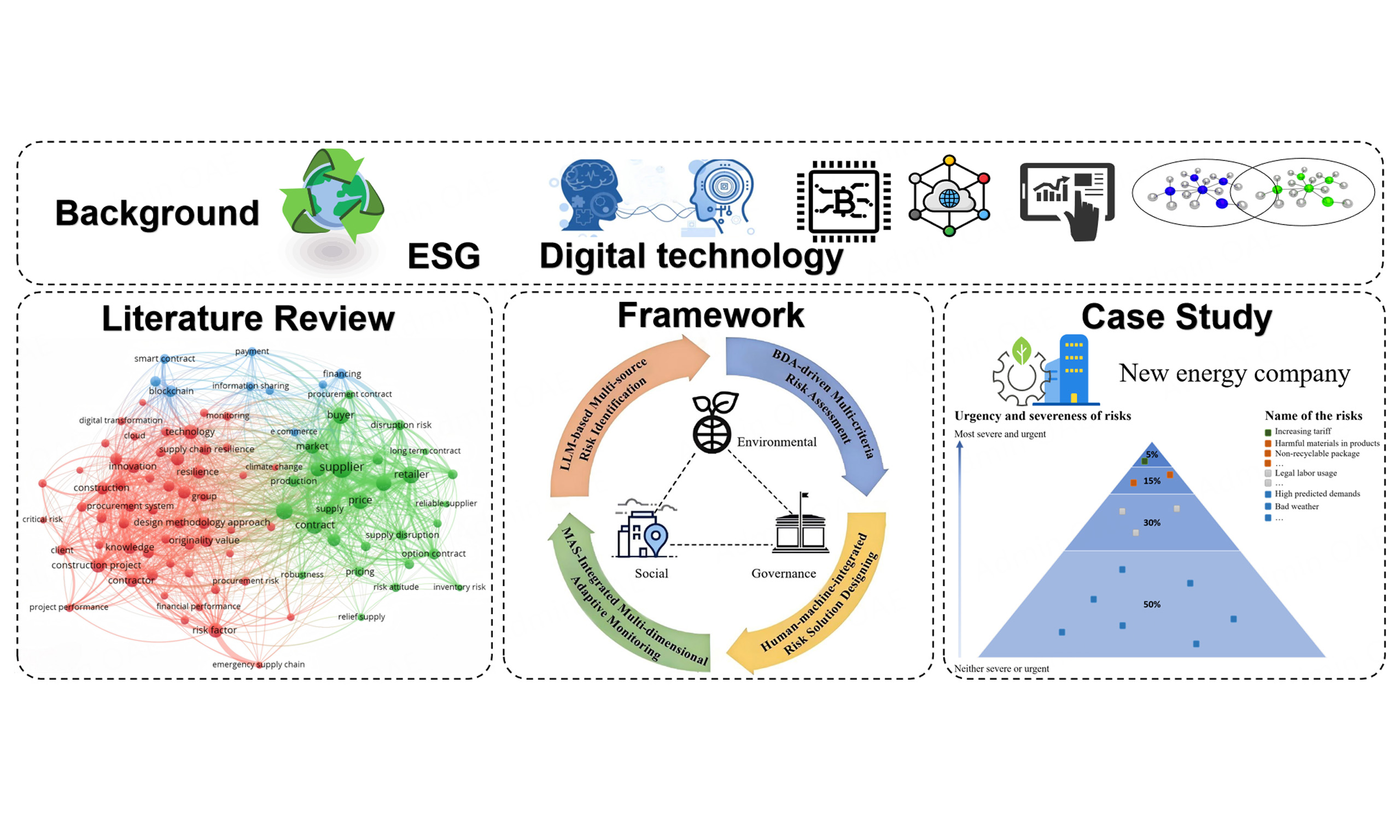
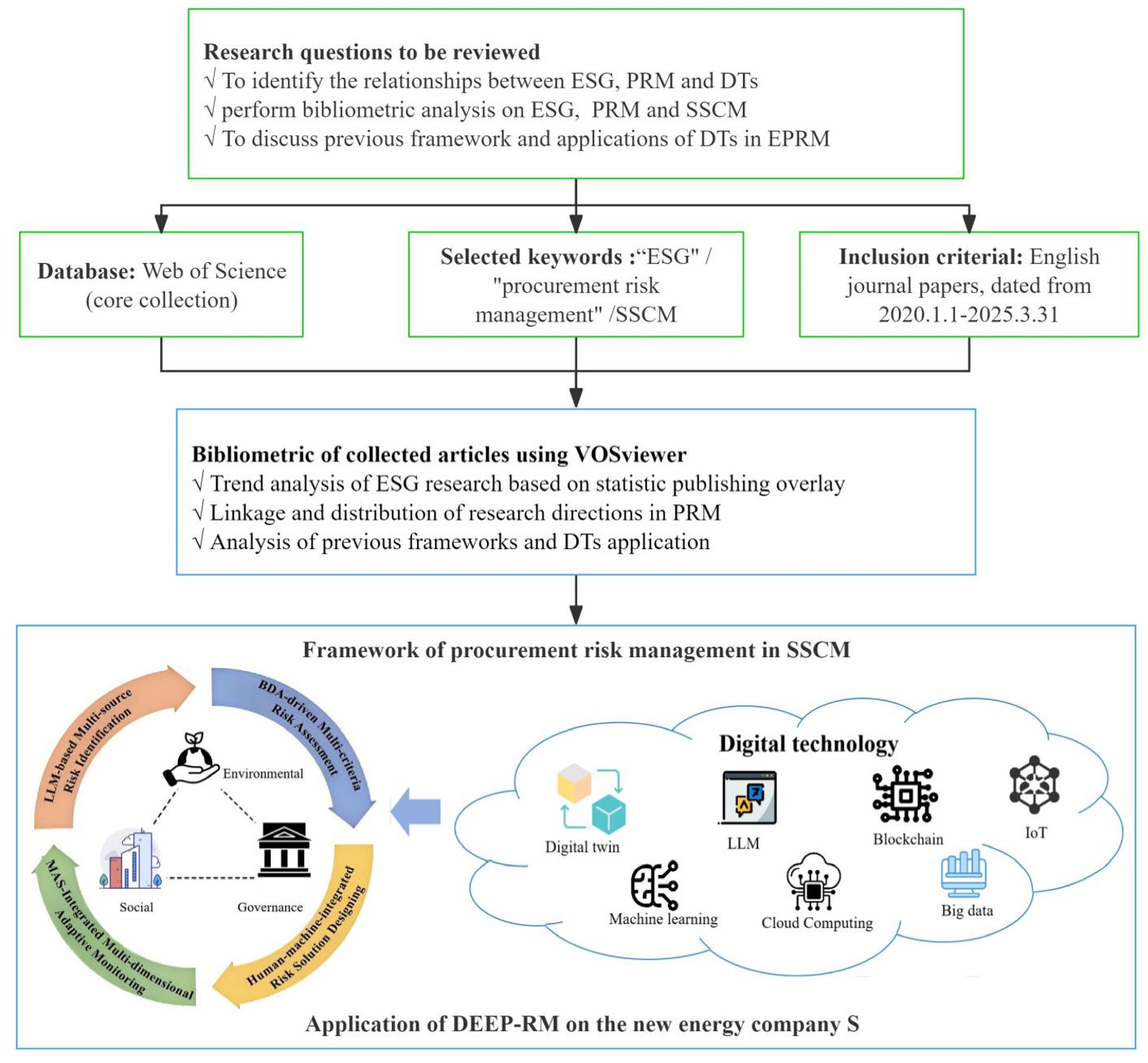
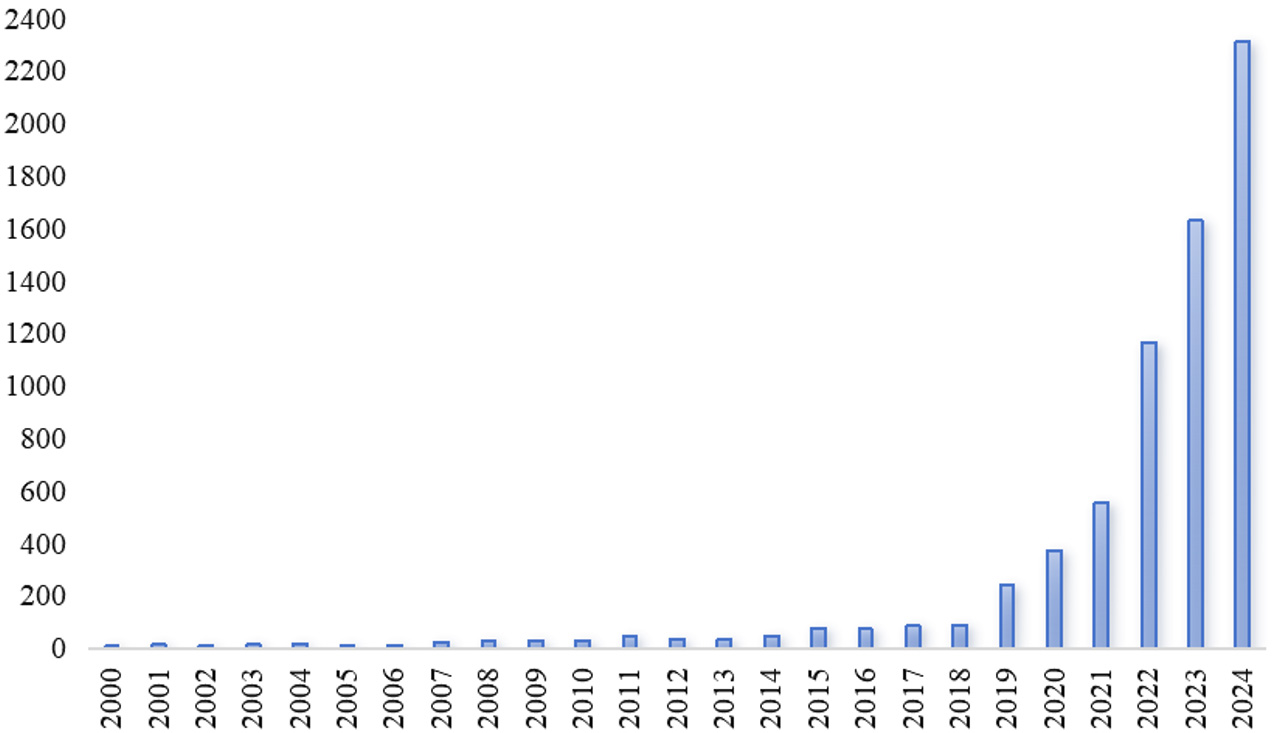
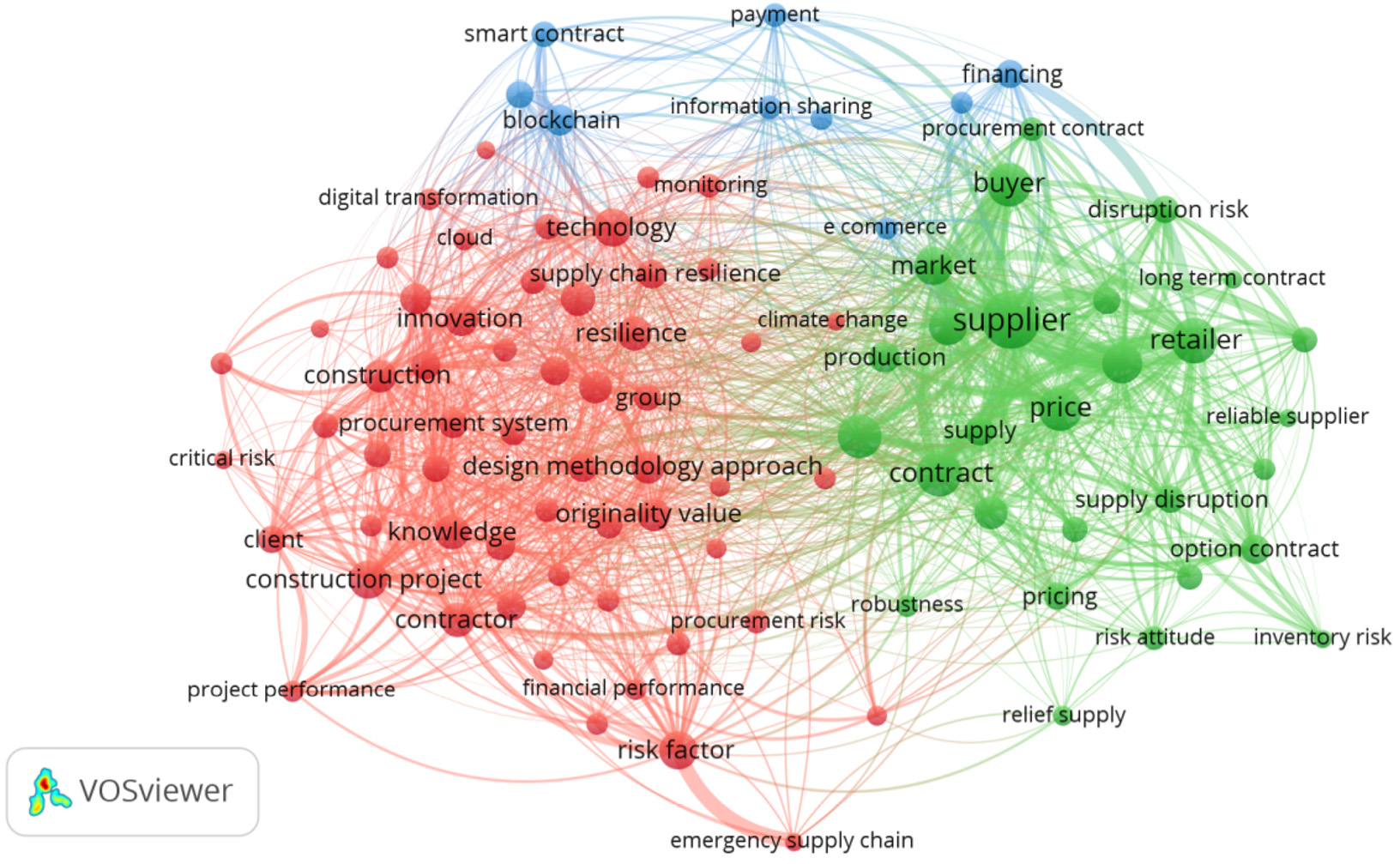
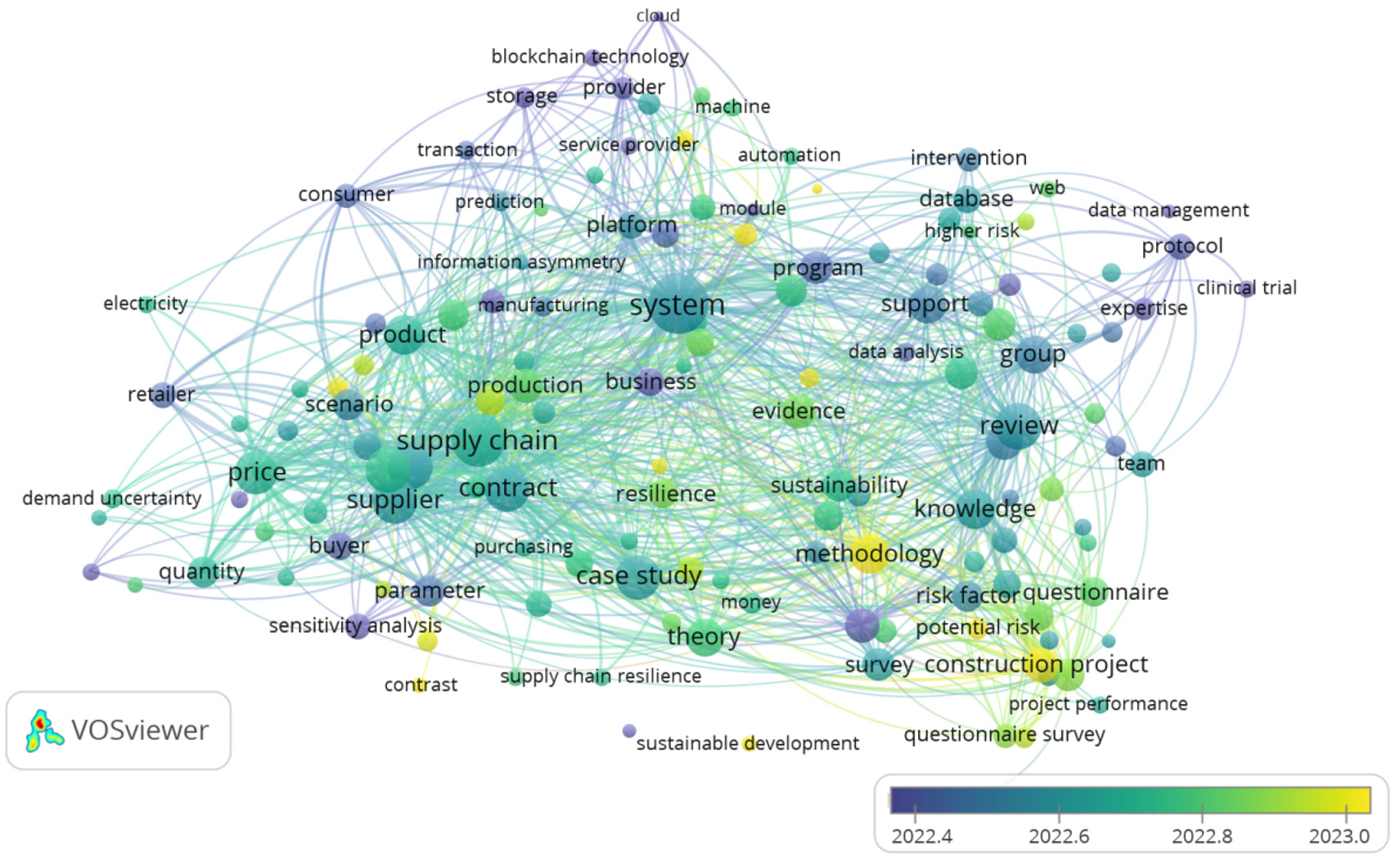
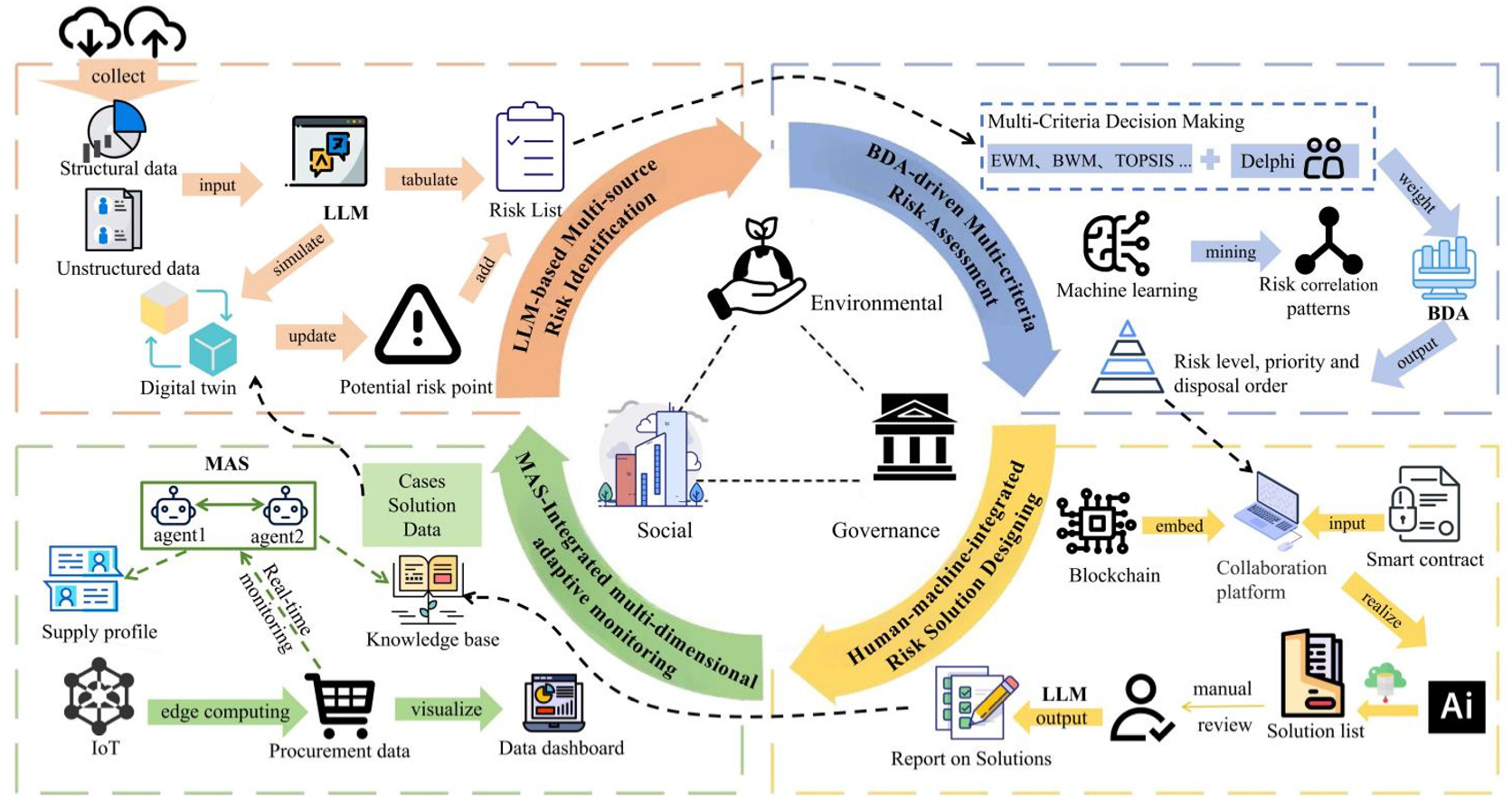
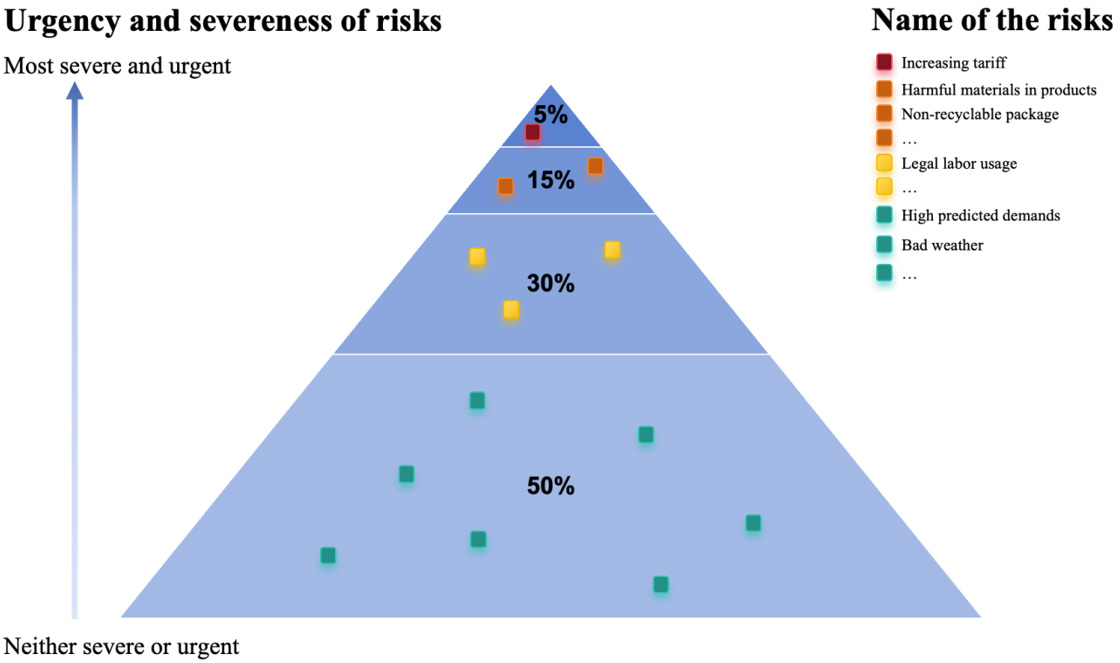






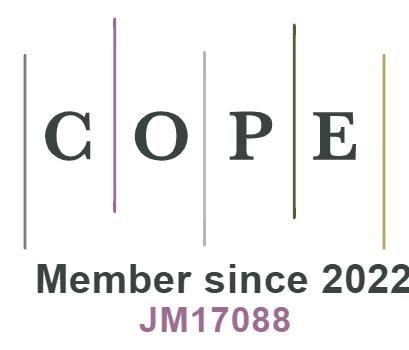



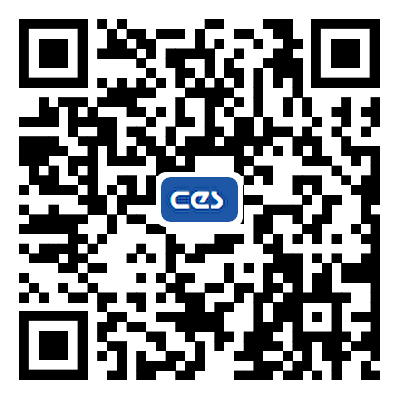
Comments
Comments must be written in English. Spam, offensive content, impersonation, and private information will not be permitted. If any comment is reported and identified as inappropriate content by OAE staff, the comment will be removed without notice. If you have any queries or need any help, please contact us at [email protected].